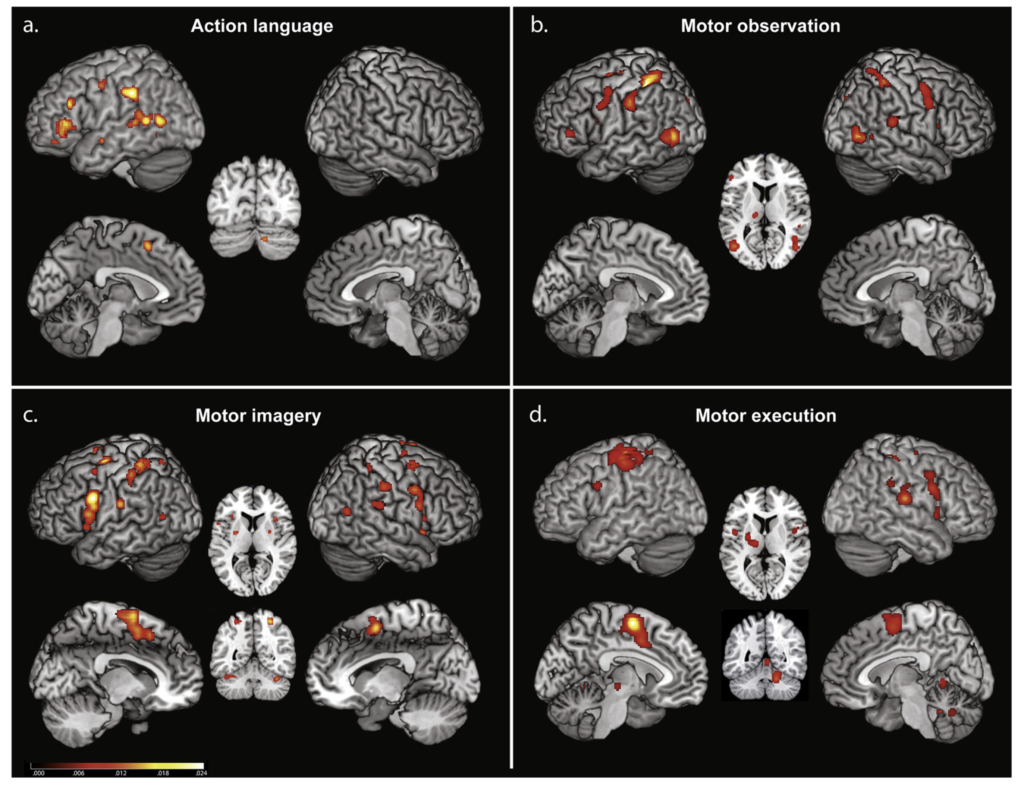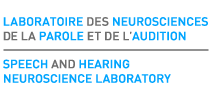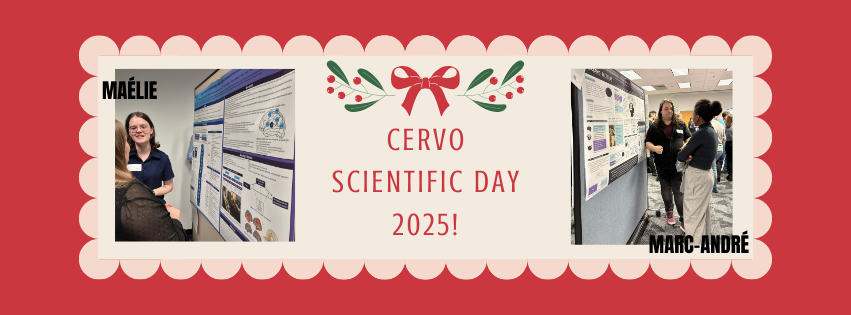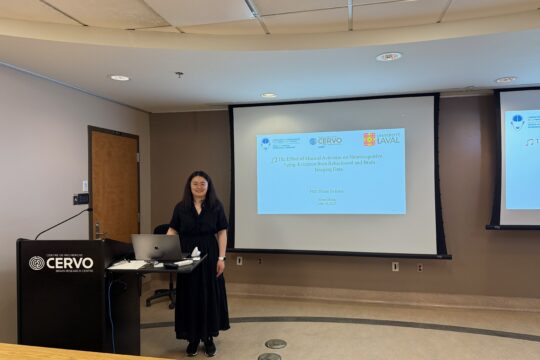
When you read the sentence I ride my bike, do you feel like you’re on a bicycle? Not really, but unconsciously, certain regions of your brain related to movement actually get activated!
This idea – that the motor system, i.e., the system that controls body movements, plays a role in the processing of action language – has been demonstrated in numerous studies. Action language refers to the oral or written expression of an action. Studies on this topic usually involve asking adults to perform language tasks in an MRI machine, such as silently reading a word (e.g., the word write) or an action sentence (e.g., The child throws the ball) displayed on a screen. The results of these studies generally show activation of regions related to language processing as well as motor regions.
However, despite decades of research, the nature of the motor system’s role in action language processing remains controversial. Since the motor system activates to understand action language, one may wonder if it activates in the same way when we perform an action ourselves (e.g., running), when we observe another person performing the same action, or when we imagine a person performing the action. Is this activation ‘mandatory’ for understanding a word? And what happens if I hear an action word that represents an action I’ve never performed? Some studies have shown that individuals born without arms understand action words describing manual actions perfectly well (e.g., wave, write, scratch), even if they cannot activate the motor regions that control the hands. The controversy continues!
Melody Courson, a former doctoral student in our team who moved on to a postdoctoral fellowship at Université de Montréal, was very interested in this question. Indeed, her entire doctoral thesis focused on this thorny yet fascinating question. You can download it on the link found below! In collaboration with Pascale, the lab director, she conducted a literature review and two meta-analyses to better understand the neurological mechanisms involved in action language processing. After inspecting 702 articles to identify studies that addressed their question, the team thoroughly evaluated 89 studies!
Melody’s analysis based on these 89 articles show a gradient: the functional network for action language is more similar to the observation of movement than to motor imagery or the execution of movement. In fact, in terms of motor activity, imagining an action is more similar to actually performing it than observing or reading about it.

Figure 3 taken from Courson M., Tremblay P. (2020) Neural correlates of manual action language: comparative review, meta-analyses and ROI analysis. Neuroscience and biobehavioral reviews 16, 221-238. The colored regions are activated during the targeted tasks according to the scale at the bottom left (the more significant the activation, the paler the color). a. Activation during an action language task; b. Activation when observing another person performing an action; c. Activation when imagining someone performing an action; d. Activation when performing an action.
In general, the similarities between action language and motor activity are more cognitive than muscular. Our brain uses regions related to actions to imagine movement in order to understand language. Understanding the role of the motor system in language processing opens up new avenues for language rehabilitation therapy.
The analysis of all these articles has also led to ideas for future studies by highlighting the strengths and weaknesses of previous studies and identifying unexplored questions, which will improve the quality of future research!
This scientific article was published in the journal Neuroscience & Biobehavioral Reviews. Congratulations!
To learn more:
- Melody’s wonderful thesis: http://hdl.handle.net/20.500.11794/28253
- Courson, M.,Macoir, J., *Tremblay, P. (2017) A facilitating role for the primary motor cortex in action sentence processing. Behavioral Brain Research, 336:244-249
- Courson, M., Macoir, J., *Tremblay, P.(2017) Role of medial premotor areas in action language processing in relation to motor skills. Cortex, 95:77-91.
- *Tremblay, P., Sato, M., & Small, S. L. (2012). TMS-induced modulation of action sentence priming in the ventral premotor cortex. Neuropsychologia, 50(2), 319-326.
- *Tremblay, P., & Small, S. L. (2010). From Language Comprehension to Action Understanding and Back Again. Cereb Cortex 21(5), 1166-1177.
- McFarland, D. H., & Tremblay, P. (2006). Clinical implications of cross-system interactions. Seminars in Speech and Language, 27(4), 300-309.
Other suggested readings:


